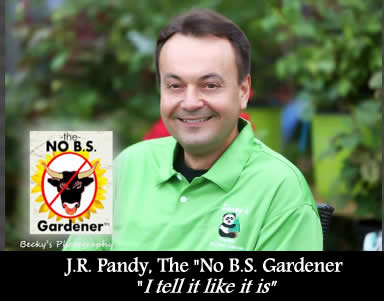What will August bring? Wacky weather continues in Ohio after a rather dry July. The amount of disease caused by high humidity's is wreaking havoc on many perennials, landscape plants and vegetable plants in the garden. I have seen lots of stress caused from these shifts in temperatures... Many of my clients are experiencing frost cracks on trunks from hot weather causing sap to flow and expand followed by cold weather shrinking sap and causing bark to contract. This results in cracks or splits on bases of trees. The only thing to do is to give the tree time to heal. Just let it be. It may take a few years, but the tree will heal itself and the new growth will eventually merge back together over time.
I also have a lot of clients who are telling me their plants are just dying seemingly overnight. They are fine one day and dead the next. An autopsy of the root system needs to be performed if you want answers. Most times, it is rotting of the roots due to a poorly drained site or too much water given to the plant. Improper planting and excessive watering are the main reasons for the death of many plants. I like to plant all my plants elevated from surrounding soils and check if a plant is dry before determining if I should water it or not. Watering everyday is a prescription for a slow death if you do not check first. This is so important.
Now, moving on to summer blooming plants, my friend at Sunbeam Gardens, a wholesale perennial grower, provided me with a list of perennials which will add color in summer and fall. They are:
Agastaches-which bloom until frost in fall
Achilleas(yarrow), alliums(ornamental Onions), crocosmias, echinaceas (cone flowers), perovskias (Russian Sage) Phlox paniculata (tall phlox) Rudbeckias (Black Eyed Susans): Are great plants that bloom now thru August.
Butterfly bushes are blooming machines and with a little dead heading (removing spent flowers) they will bloom till frost.
Many perennials when deadheaded will rebloom as well. They are coreopsis (tickseeds), dianthus(pinks), lavenders, nepetas (cat mints) and Veronicas (Speedwell) just to name a few. Get out the shears and just cut the whole plant back and in 5-6 weeks, you will have blooms.
The color of the foliage of heuchera (coral bells) is always interesting with many options to choose from.
Tons of ornamental grasses exist which will add some eye-popping color and their plumes are an added bonus.
Ferns, cimicifugas, and ligularias can really add some interest to shady areas. Let's not forget the tons of varieties of hostas as well.
Sedums for sun, anemone's, geraniums and heliopsis (false sunflowers) should not be overlooked.
I also like the blue blooming caryopteris (bluebeard or spirea) which starts to bloom now and continues for a long stretch of time. Weigelias will give you a few blooms and NO one can resist the changing colors of hydrangeas. These are great plants for summer blooms that change from whites to pink and even reds.
If you are into evergreens, check out a new upright arborvitae called 'jantar'(amber gold) which is an astonishing color of yellow. It grows slowly and provides year-round color. In the same genus, firechief round globular arborvitae develop a changing orange to red color in fall. They are slow growers and are very popular.
An oldie but a goodie is a potentilla which blooms now till frost on new growth. Yellows, whites, pink and many new colors seem to be introduced each year. Bloomerang lilacs offer some purple flowers as they rebloom for 3rd time in August and the most florific plant I know of is the Knockout Roses available in many colors and now, sizes. The new petite knockout is awesome and living up to its name as a shorter more compact form of Knock out.
Add some of these suggestions to your landscape and sit back and enjoy a landscape that will add beauty to your homes for years to come... The other benefit of planting hardy flowers and flowering bushes is the addition of pollinators to the garden. We all know they need all the help they can get. Just remember NOT to use herbicides (weed killers), or insecticides in or around pollinator gardens.







Leave a comment